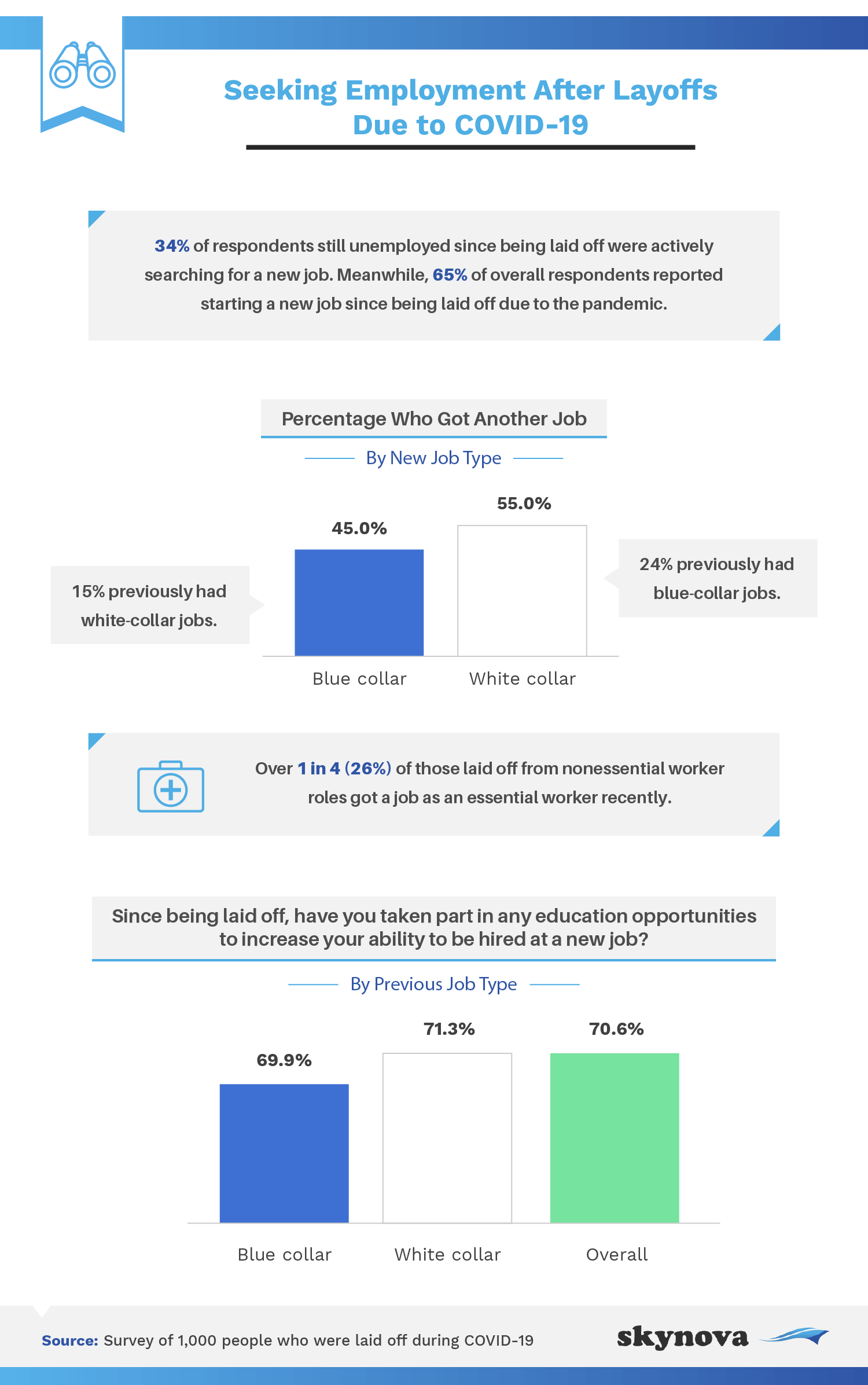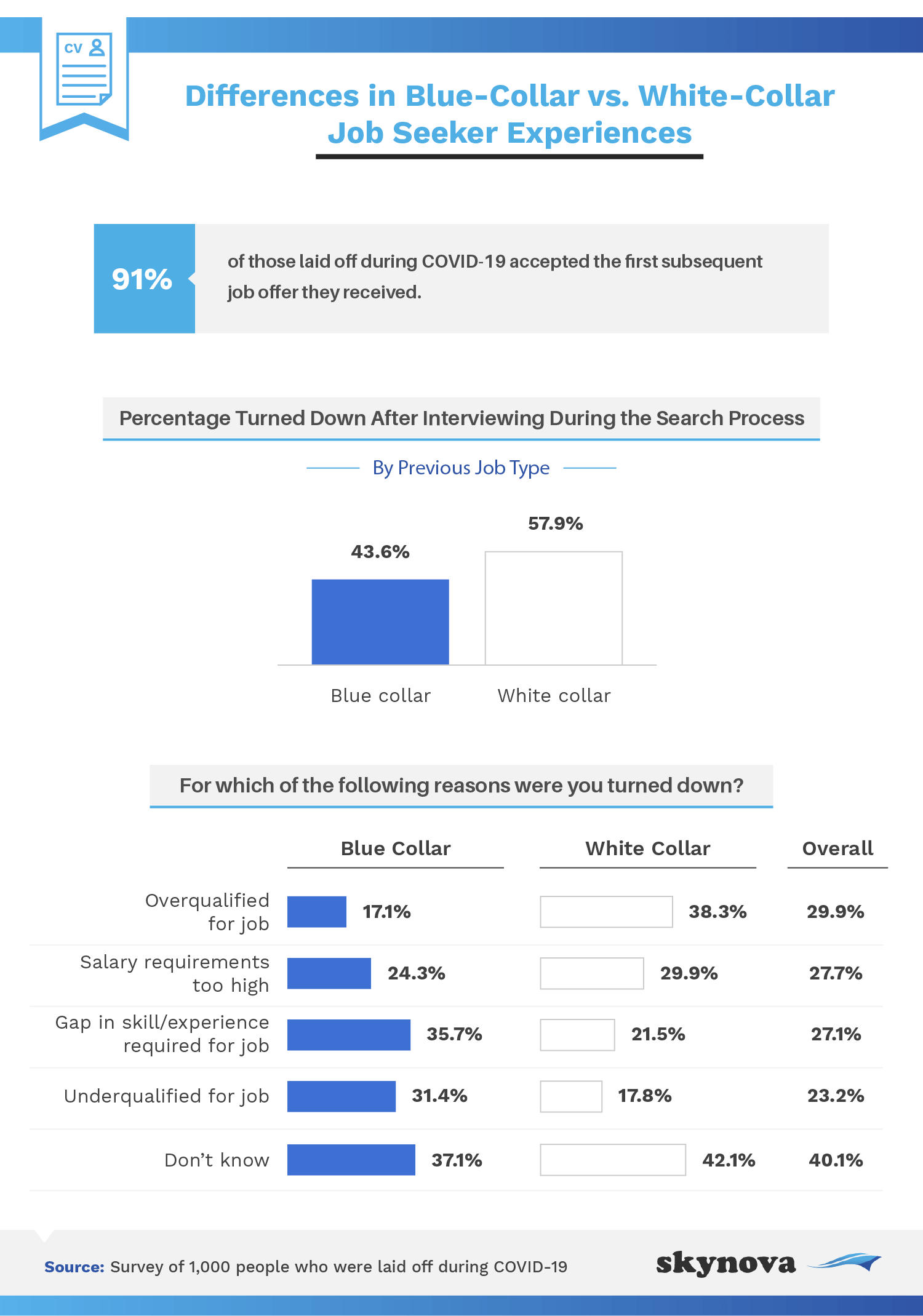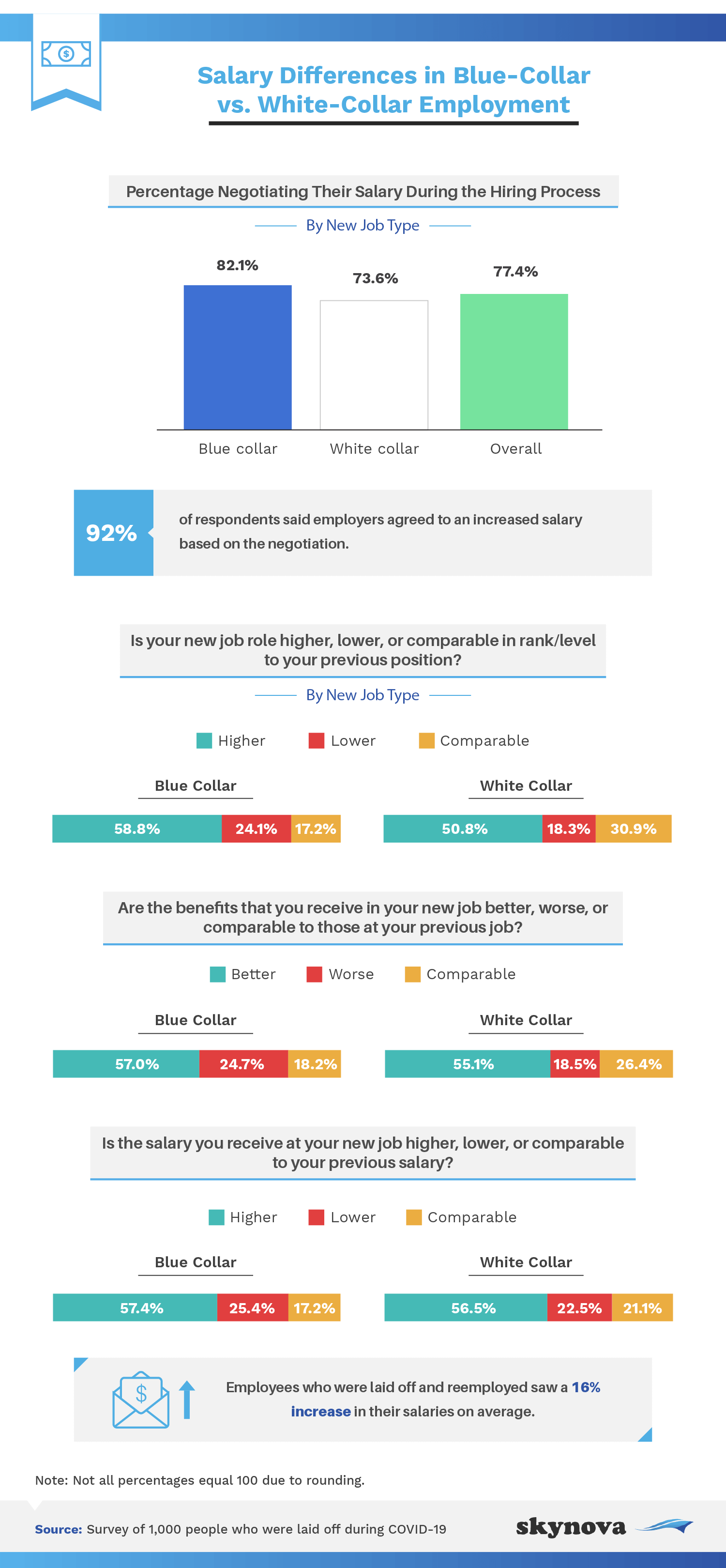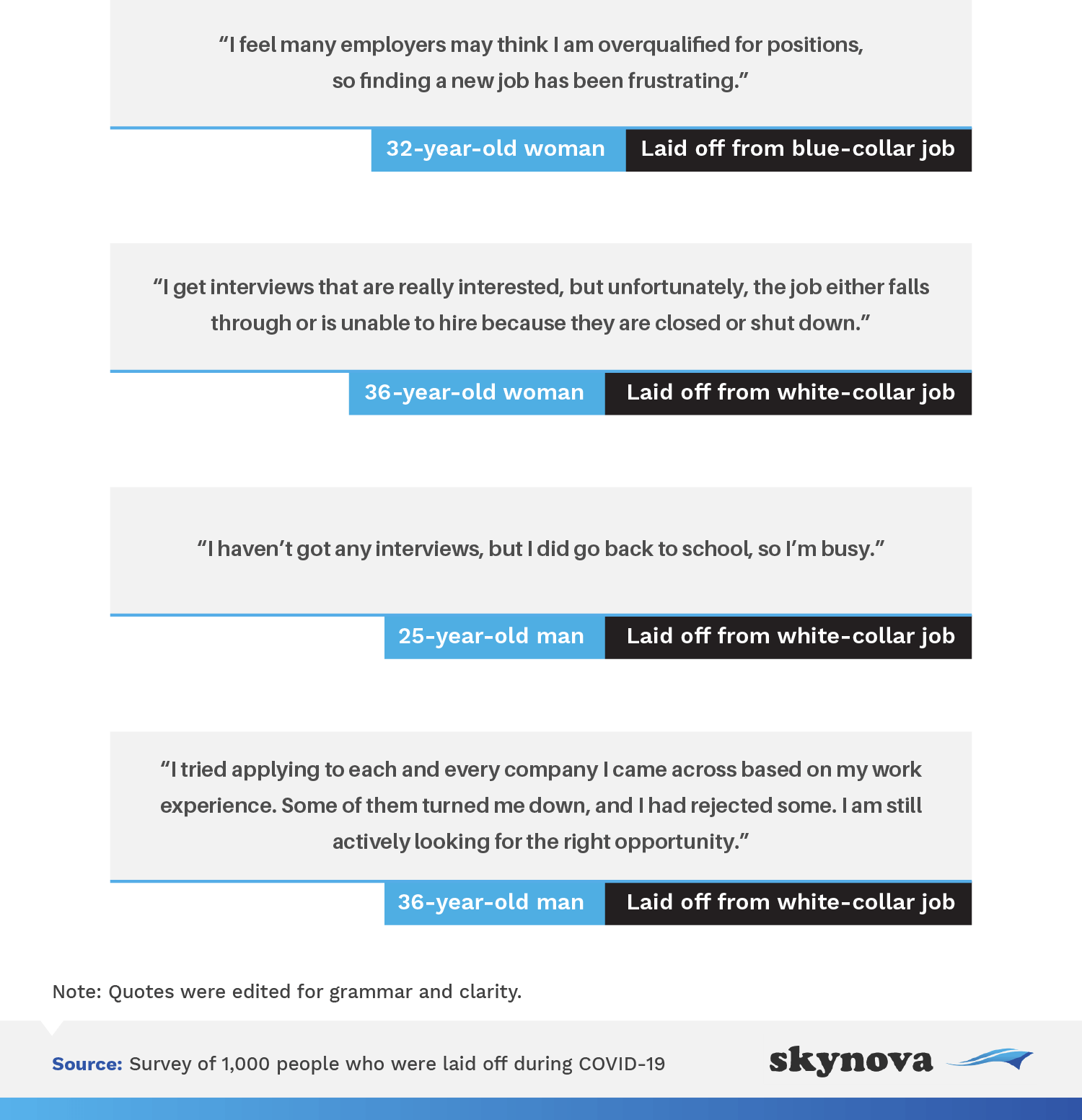
|
For years, the workforce has been on track to turn remote, a track expedited by the coronavirus pandemic. But despite the workforce’s trajectory, the transition to remote work during the pandemic didn’t prevent a dramatic economic downturn and skyrocketing unemployment rates. In just three months of the pandemic, unemployment rates rose higher than they did in two years of the Great Recession.
Even as states moved through the phases, reopening restaurants, bars, retail stores, and other businesses, the unemployment rate remained elevated. But are employees in every industry equally impacted by layoffs and the race for employment, or are some finding it easier to land a job than others? We surveyed 1,000 people laid off due to the COVID-19 pandemic to better understand the challenges of finding work during these unprecedented times.
When states began imposing restrictions on businesses, many shut their doors with the intent of reopening after a week or two. But months later, over 100,000 businesses that temporarily closed had to shut their doors for good. The economic struggle small and large businesses faced left millions of people out of work, 34% of which are still unemployed and actively searching for a new job. While 65% of respondents reported starting a new job since being laid off due to the pandemic, a significant portion changed industries. Of those who got another job, 45% got a blue-collar job, despite 15% previously holding white-collar jobs. Similarly, 55% of respondents got a new white-collar job, despite 24% previously holding blue-collar jobs.

However, one thing was shared between both blue-collar and white-collar employees. Of those who previously held blue-collar jobs, 69.9% took part in educational opportunities in an effort to increase their ability to be hired at a new job. On the other hand, 71.3% of previous white-collar workers did the same.
Educational opportunities or not, a whopping 91% of those laid off during COVID-19 accepted the first job offer they received – and they were smart to do so. The first wave of shutdowns impacted millions of businesses and millions of workers, and the anticipated second wave will likely do the same, causing unemployment rates to rise once again.

But for those unlucky in their search, what obstacles were in their way? White-collar workers (57.9%) were more likely to be turned down after interviewing than blue-collar workers (43.6%), with the majority of white-collar workers not being able to identify the reason. While 37.1% of blue-collar workers also couldn’t pinpoint why they were turned down, nearly as many named a gap in skill or experience required for the job as the reason behind their rejection (35.7%). On the contrary, the second most cited reason white-collar workers were rejected was being overqualified for the job (38.3%).
Switching industries and accepting the first offer received may mean employees had to take a step back in their career, but how many actually did? The majority of both blue- and white-collar workers actually applied the same job-hunting techniques as they likely would have pre-pandemic – 82.1% of those taking on a new blue-collar job and 73.6% of those taking on a new white-collar job said they negotiated their salary during the hiring process. And it turned out to be a successful strategy for most: 92% of respondents said employers agreed to an increased salary based on the negotiation.

But were the negotiations in line with their previous employment package? Overall, it seems those taking on blue-collar jobs got the better end of the deal. While nearly 59% of blue-collar workers resumed a higher ranking position than their previous one, only 50.8% of white-collar workers did the same. Similarly, 57% of blue-collar workers received better benefits than they had in their previous position, while 55.1% of white-collar workers did as well. Even when it came to salary, blue-collar workers were slightly more likely to land a higher salary than their white-collar counterparts.
There may be some similarities in job search struggles, but experiences can vary from individual to individual. We asked respondents to describe their most recent interview or job negotiation experience after being unemployed, here is what they had to say.

Millions of Americans have felt the impact of the COVID-19 pandemic – in health, happiness, and finances. But as the pandemic leaves its mark on the workforce, not everyone is impacted equally. Blue-collar workers are not only feeling the negative side of the shift to remote work; they are also struggling to find new jobs more than their white-collar counterparts. Nevertheless, employees accepting new blue-collar jobs were more likely to snag a higher ranking position, a higher salary, and a better benefits package. The workforce has a long way to go to return to pre-pandemic success, but if blue-collar workers have shown one thing, it’s that the changes occurring aren’t all bad.
At Skynova, we provide small businesses with online software to make invoices, accounting, and time sheets easier. We also like to write detailed articles about various topics we’re confident our customers will find interesting. Generally, these articles have a business or workplace angle, but they often include an intersection with other areas like business and technology, politics, sports, and health. All of our articles are based on statistics-backed surveys and research conducted by us to ensure our readers and customers are introduced to novel insights or perspectives.
We surveyed 1,000 people laid off due to the COVID-19 pandemic. Of our respondents, 49% were women, and 51% were men. Respondents’ ages ranged from 23 to 61 years old with an average age of 37 and a standard deviation of 10.
For short, open-ended questions, outliers were removed. To help ensure that all respondents took our survey seriously, they were required to identify and correctly answer an attention-check question.
These data rely on self-reporting by the respondents and are only exploratory. Issues with self-reported responses include, but aren’t limited to, exaggeration, selective memory, telescoping, attribution, and bias. All values are based on estimation.
Millions of Americans are out of work, but the constant job search can make people feel alone in the struggle. Help them out by sharing this project with readers for noncommercial purposes. All we ask is that you include a link back to this page so our contributors receive proper credit.